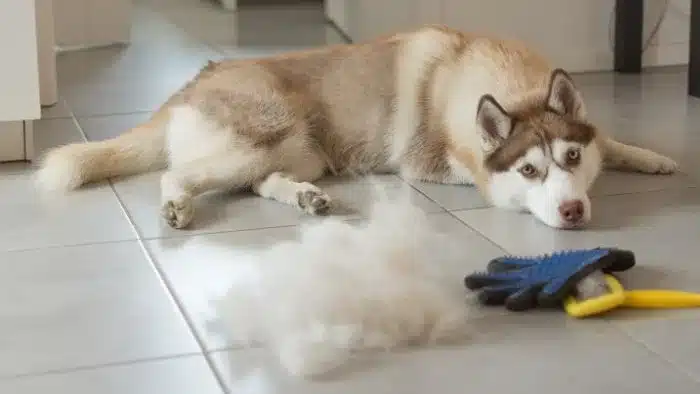How do you deal with your dog’s shedding?

No matter if you own a “walking cotton ball” Samoyed or a “short-haired cutie” Corgi, most dog parents face the same trouble: fur on clothes, hair on the sofa, and even the robot vacuum full of fluff. Shedding seems like part of pet life, but with the right methods, you can turn your home from a “fur battlefield” into a “low-shed zone.”
1. Understand Shedding Basics
First, know the difference between normal shedding and abnormal shedding.
Normal shedding: Daily hair turnover and seasonal coat change (spring & fall). This can mean a lot more fur for 1–2 months, but it is natural and needs no treatment.
Abnormal shedding: Bald spots, red skin, dandruff, or hair loss with poor appetite and weight loss. Causes may include skin diseases, parasites, allergies, hormonal issues, or a poor diet. If these signs appear, consult a veterinarian promptly.
2. Daily Grooming
The most effective way to reduce loose hair is regular brushing.
For long-haired dogs, use a pin brush and a rake comb; for short-haired dogs, a rubber brush with a pin brush; and for curly-haired dogs, a pin brush with a grooming comb.
During the dog’s shedding season, brush your dog 15–30 minutes a day. At other times, 2–4 times a week is enough.
3. Pay attention to nutrition
Healthy hair starts with good food. Protein is the main building block of fur, so use quality dog food or add chicken, beef, salmon, or egg yolk. Omega-3 and Omega-6 help reduce skin problems and add shine, and can be found in fish oil, flaxseed oil, and krill. Avoid salty, oily, or sugary human food, and always provide clean water.
4. Environment & Extra Care
Maintain a room temperature of 20–25°C. Avoid heat stress or overuse of heaters.
Bathe only every 2–3 months (monthly in shedding season) with dog shampoo, not human products. Dry the coat fully to avoid fungus.
Do regular deworming to prevent parasites.
If shedding seems unusual, adjust diet and care first. If no improvement in 1–2 weeks, go to the vet.
Shedding can’t be fully stopped, but with the right care, it becomes manageable. When your dog runs around with a shiny, smooth coat, you’ll know all the effort is worth it.
